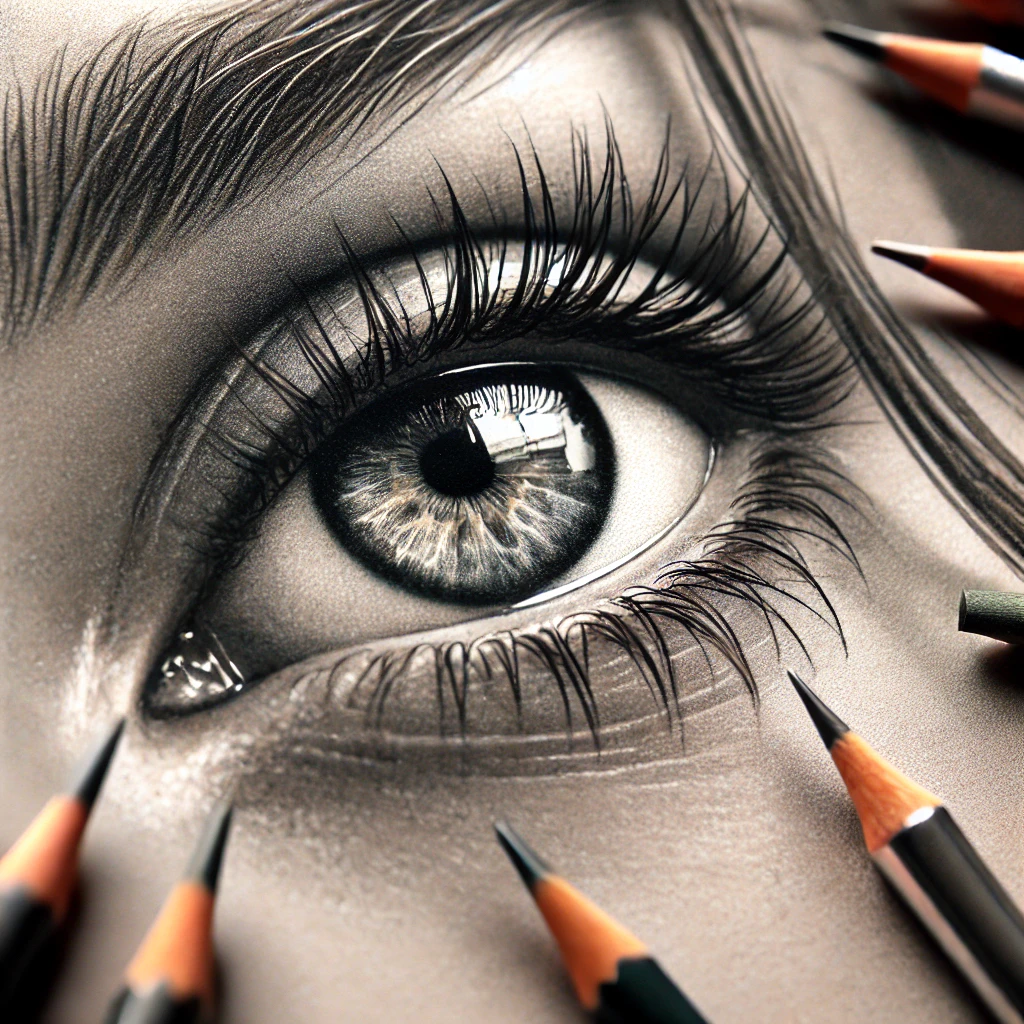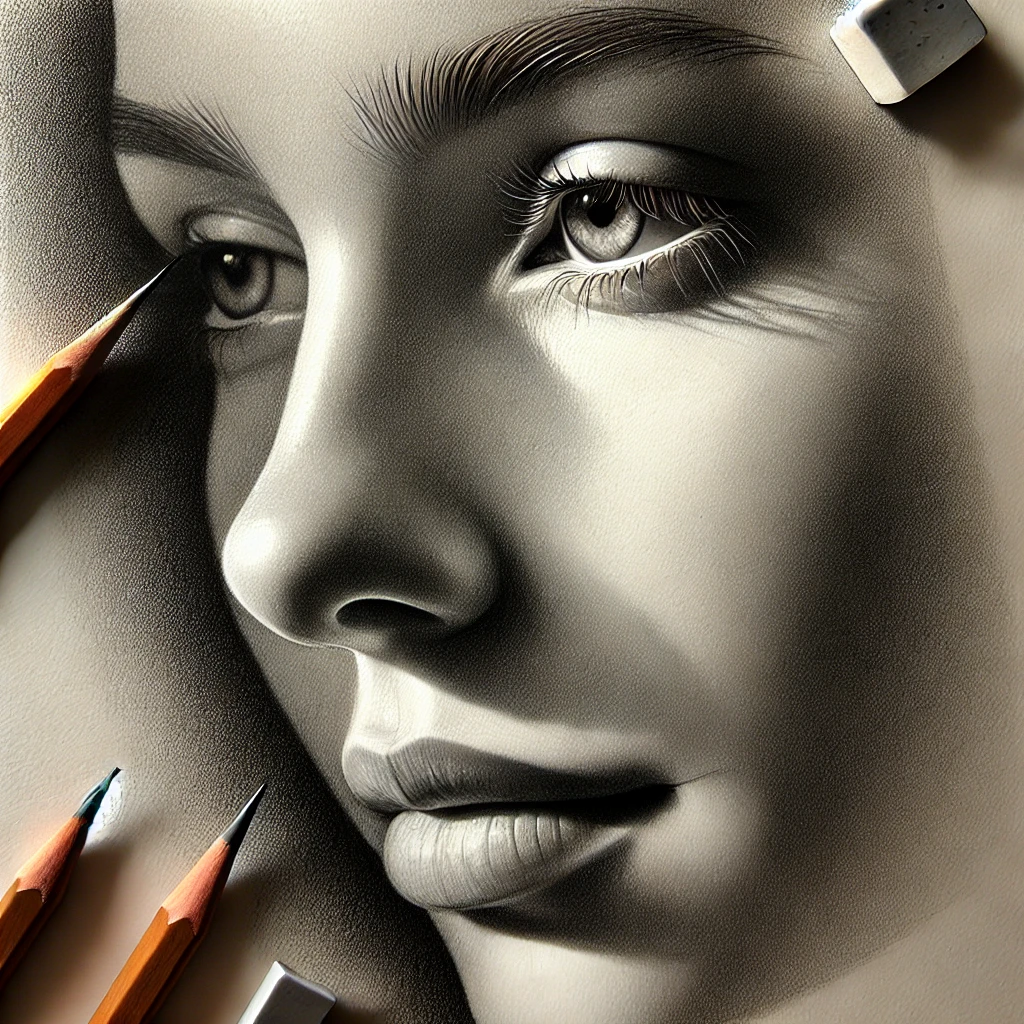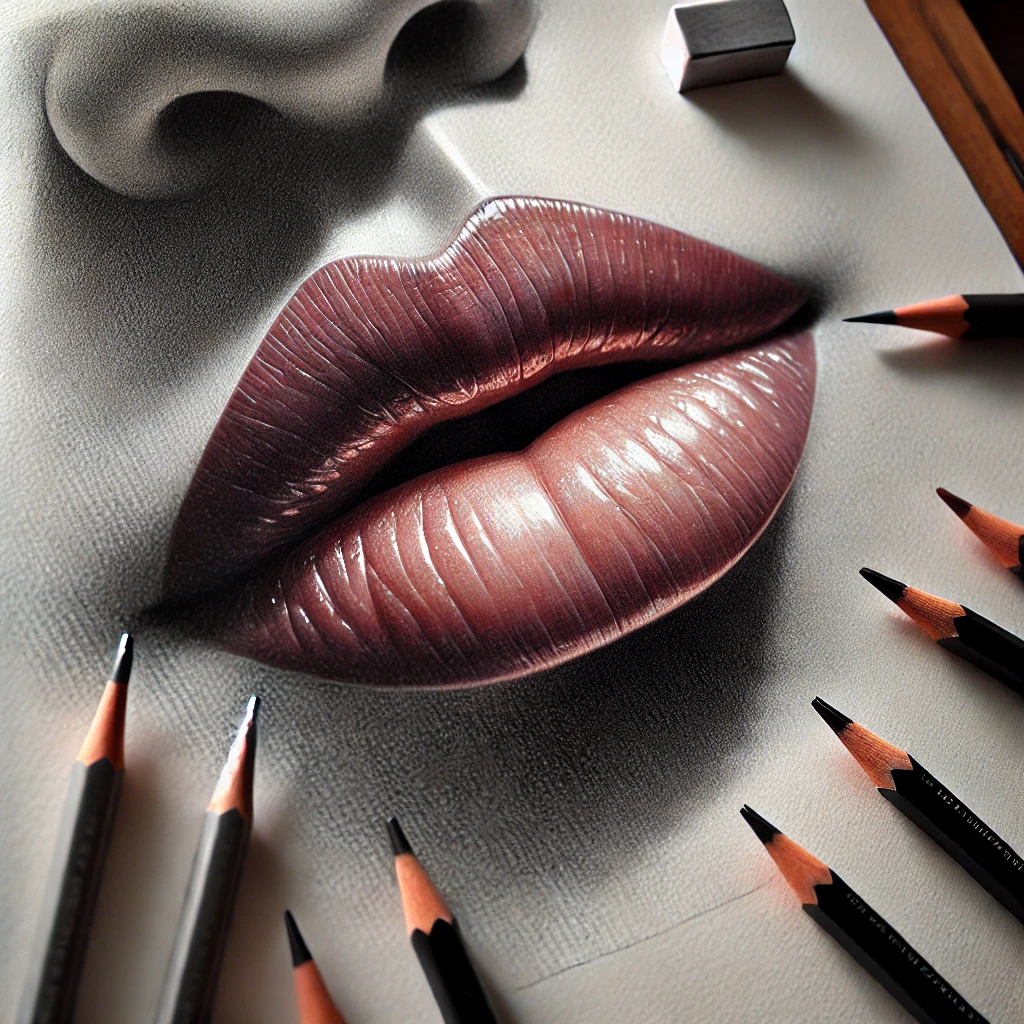Creating a realistic female portrait requires more than just technical skill—it’s about capturing depth, emotion, and the play of light to bring your subject to life. Light is the key element that defines form, texture, and mood in portrait drawings. By mastering light observation and replication, artists can elevate their work from simple sketches to breathtakingly lifelike portraits.
Understanding Light and Shadow in Portrait Drawing
Light behaves in predictable ways, and understanding its fundamental principles will enhance your ability to create depth and realism. Here are key lighting concepts to consider:
- Light Source – Identify the direction of the light. Is it natural or artificial? Soft or harsh?
- Highlight Areas – The brightest spots on the face where light directly hits.
- Midtones – Areas where light falls but with reduced intensity.
- Core Shadows – The darkest areas where light is completely blocked.
- Reflected Light – Subtle illumination bouncing off nearby surfaces.
- Cast Shadows – Shadows that the subject casts onto another surface.
Product Recommendation:
- Adjustable LED Desk Lamp – Control the direction and intensity of your light source while drawing. Shop Here
- Photography Light Reflector Kit – Helps understand how reflected light affects a subject’s appearance. Shop Here
How to Observe Light on Female Features

(This blog contains affiliate links, meaning I make a small commission at no extra cost to you.)
Female portraits often emphasize softness, elegance, and emotion. Studying light’s interaction with facial features can enhance these qualities:
- Eyes: The catchlight (a small highlight in the eye) brings life and depth.
- Cheekbones & Nose: Observe how light shapes these features—use soft shading to maintain realism.
- Lips: Highlight the top of the bottom lip to give them a three-dimensional appearance.
- Hair: Use fine strokes to mimic how light reflects off strands.



Product Recommendation:
- Soft Graphite Pencils Set – Perfect for creating delicate shading. Shop Here
- White Gel Pen – Great for adding highlights to eyes and lips. Shop Here
Techniques to Replicate Light for Realistic Depth
Mastering shading techniques is essential for achieving depth and emotion in female portraits. Try these methods:
1. Blending for Soft Shadows
- Use a blending stump or soft tissue to create smooth transitions between light and shadow.
- Avoid harsh lines unless the subject requires strong contrasts.
2. Hatching and Cross-Hatching
- Create depth with fine, controlled strokes that follow the contours of the face.
- Use layered hatching for subtle tonal variations.
3. Lifting Highlights with an Eraser
- Use a kneaded eraser to lift graphite and create natural-looking highlights.
- A precision eraser can help refine tiny details like eye reflections.
Product Recommendation:
- Blending Stumps & Tortillons – Essential for seamless shading. Shop Here
- Kneaded Eraser [Shop Here] & Precision Eraser Kit [Shop Here]– Helps create realistic highlights.
Light and Emotion: Setting the Mood in Portraits
The way light is positioned affects the emotion conveyed in a portrait. Here are some lighting styles to consider:
- Soft, Diffused Light – Creates a dreamy and gentle feel, perfect for serene expressions.
- Strong Side Lighting (Chiaroscuro) – Adds drama, mystery, and depth.
- Backlighting – Creates a glowing effect, making edges appear illuminated.
- Rembrandt Lighting – A small triangle of light on the cheek gives a classical, sophisticated look.
Product Recommendation:
- Reference Photo Books on Portrait Lighting – Learn from professional photography. Shop Here
Practice Exercises for Mastering Light in Portraits
- Observe Natural Light: Study how sunlight falls on faces at different times of the day.
- Draw from Life: Use a small mirror or a model under different lighting conditions.
- Experiment with Photography: Take reference photos under varied lighting setups.
- Grayscale Studies: Create value scales to improve tonal accuracy.
- Recreate Classic Portraits: Study how master artists used light in their works.
Final Thoughts
Mastering light in female portraits takes patience and practice, but the results are worth it. Keep experimenting with lighting setups, refine your shading techniques, and develop your unique artistic style. Want to improve even faster? Try using high-quality art tools that enhance your drawing process!
Explore Essential Art Supplies to Elevate Your Portraits! Shop Now
By integrating these techniques and tools into your workflow, you’ll be able to create female portraits that captivate viewers with their depth, realism, and emotion. Happy sketching!
Pin This for Later! 📌
✏️🎨✨ Want More Inspiration? Check out our related posts:
Elevate Your Shading: The Top 3 Blending Stumps Every Artist Needs
[…] Creating a realistic portrait is an exciting challenge that combines technique, patience, and the right set of art tools. Whether you’re capturing the details of a loved one or perfecting your self-portrait, the tools you use can make a significant difference in achieving lifelike results. If you’re aiming to create a drawing that reflects depth, texture, and emotion, here are the essential art tools you’ll need to bring your realistic portrait to life. […]